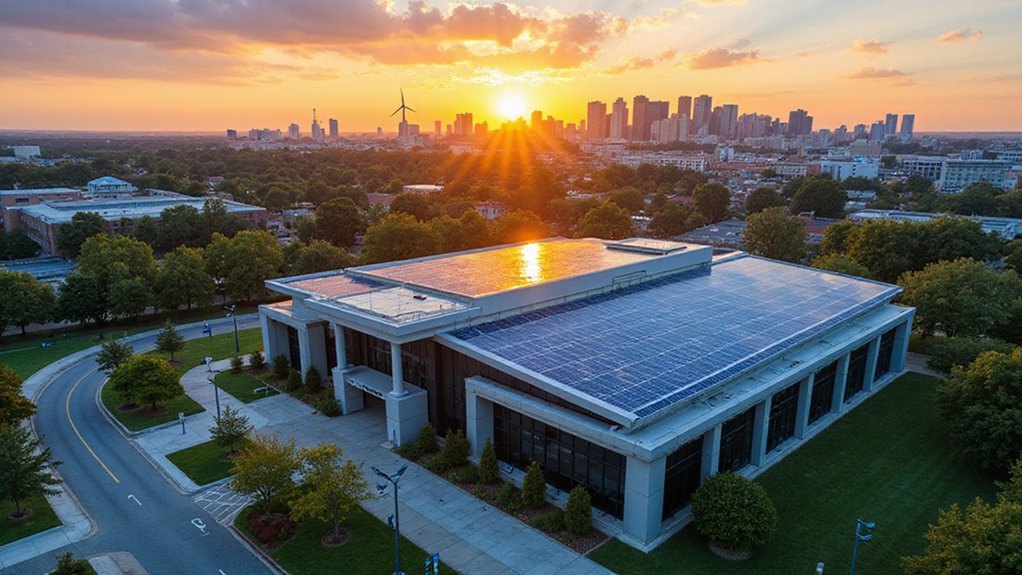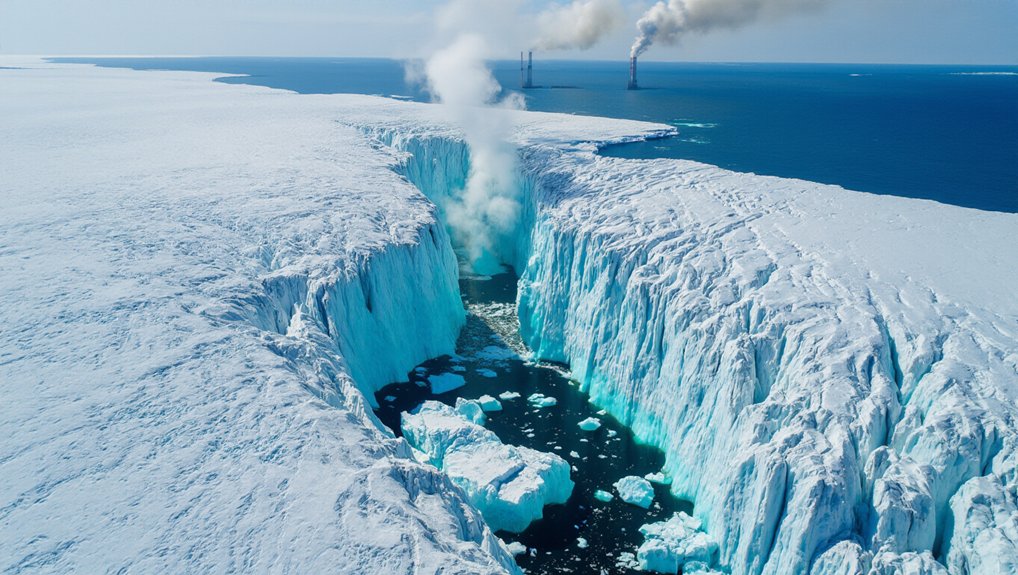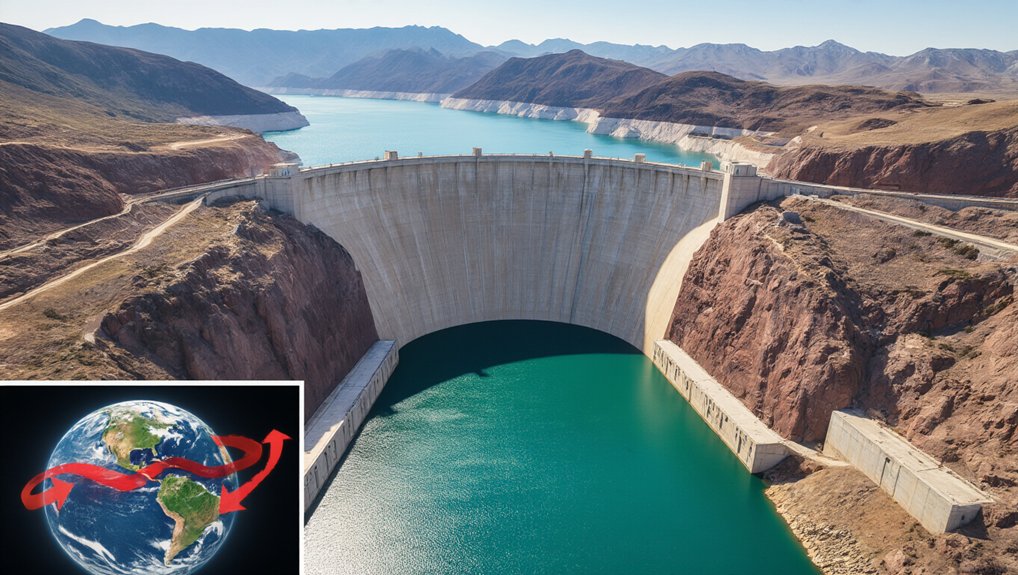SpaceX watched 38 of its Starlink satellites burn up like expensive fireworks on live tracking screens. The February 3, 2022 launch turned into a $100 million catastrophe when solar fury met corporate ambition. Only 11 satellites survived the onslaught.
Thirty-eight satellites turned to ash when solar fury met corporate hubris in orbit.
The satellites never had a chance. Deployed at just 130 miles above Earth, they hit atmospheric drag 50% stronger than expected. Think of it like trying to fly a paper airplane through molasses. The satellites cooked themselves to death, raining debris over the Caribbean like some twisted space piñata. This catastrophic failure mirrors how clean energy jobs in America declined significantly as climate policies shifted.
SpaceX initially blamed a geomagnetic storm. Simple explanation, right? Wrong. Scientists now point to something called “The Terminator” – and no, not the Arnold kind. This termination event occurs when oppositely charged magnetic bands from the sun’s 22-year cycle collide at the equator, triggering sudden atmospheric expansion on Earth. On January 29, an M 1.1 class solar flare erupted from the sun’s northeast quadrant. The coronal mass ejection hurled plasma toward Earth, arriving days later to wreak havoc on the magnetosphere.
Here’s the kicker: atmospheric density in low Earth orbit can spike to 2-3 times what NOAA predicts. The satellites hit this invisible wall at 27,000 km/h. That’s like driving into a brick wall at 16,800 mph, except the wall is made of superheated gas. The February storm occurred as Solar Cycle 25 approaches its peak activity period, expected to climax in 2025.
The incident ranks among Starlink’s worst failures. SpaceX dutifully reported it to the FCC in their semi-annual filing, probably through gritted teeth. Other satellite operators took notes. Capella Space redesigned their entire approach after losing birds to similar conditions. Many now switch to safe mode when the sun throws a tantrum.
Today, 7,135 Starlink satellites circle Earth, with 7,105 operational. But here’s the thing – they’re dropping like flies. About 4-5 satellites deorbit daily, creating artificial meteor showers. January 2025 alone saw 120 satellites incinerate. Over 500 first-generation satellites have already met their fiery end.
These reentries aren’t just pretty light shows. They dump aluminum oxide into the upper atmosphere. Astronomers complain about mistaking satellite deaths for actual meteors. Meanwhile, SpaceX keeps launching replacements, betting they can outpace both solar storms and gravity.
The sun doesn’t care about quarterly earnings. Neither does physics.
References
- https://orbitaltoday.com/2025/04/28/what-took-down-starlink-satellites-new-report-points-to-a-solar-event-called-the-terminator/
- https://payloadspace.com/satellites-face-more-stormy-weather-in-2025/
- https://watchers.news/2025/02/08/starlink-satellites-reentering-earths-atmosphere-in-increasing-numbers-creating-artificial-meteor-showers/
- https://www.space.com/spacex-starlink-satellites.html
- https://phys.org/news/2023-04-solar-storm-fleet-starlinks.html








